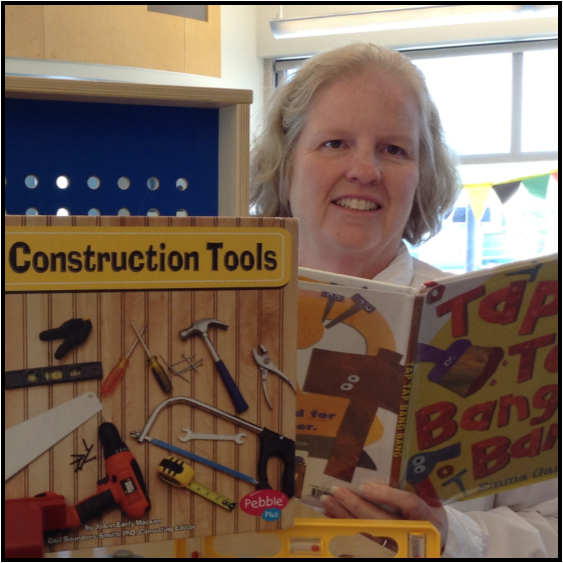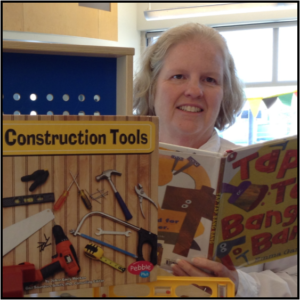This is part of a series of Session Notes from grantees who have received Professional Development grants. Each grantee will share their professional development experience and include tips and other resources from the workshop or class. Grantees had their choice of an article for the Compendium, a webinar or a podcast. This project was made possible by the Institute of Museum and Library Services.
Submitted by Deborah Drury,
Elizabethtown Public Library
Facilities Management
Fred Pryor Seminars – An Alternative Source for CEUs
Deborah Drury attended Facilities Management provided by Fred Pryor Seminars. The marketing for the seminar touted it to be a comprehensive course on facilities management. While the word comprehensive is a bit inflated, the course provided a satisfactory facilities management 101 overview and provided 12 contact hours of continuing education. If you are looking for entry level information or a general overview of facilities management, this may be a good source of information for you. Fred Pryor also offers training in OSHA and workplace safety which may be of interest to those invested in facilities management.
Fred Pryor Seminars and CareerTrack are divisions of PARK University Enterprises, Inc. out of Kansas City. They offer a wide variety of training across many categories. Current offerings may be found here: http://www.pryor.com/site/categories. The trainings are facilitated by contracted presenters who have auditioned, referenced and have been on-boarded in the areas in which they will be training. The trainers receive commissions for selling products and access to their year-long, unlimited training program at a reduced rate.
Trainings are held at locations around the United States and Canada. Additionally, they will do on-site training, provide online training opportunities and offer a supportive collection of books, DVDs, and CDs in support of their training categories.
Attendance at this seminar was reimbursed from a professional development grant with funds from the Institute of Museum and Library Services. In fulfillment of the obligations of the grant this report has been provided.
Success Starts Here – Facilities Management
Facilities are the second highest, after salaries & benefits, cost-point for operations and potentially the largest asset for Libraries. In addition, facilities literally provide the foundation upon which the mission of the Library is fulfilled. For these reasons, facilities management warrants a position of high priority and attention by Library administration and leadership.
Proper facilities management also provides for the safety and wellbeing of employees, volunteers, and users of Library services. Every year there are reports of personnel missing work due to injury sustained or illness contracted while at work. Intentional facilities management and maintenance policies and practices are the front-line of defense against such injury and illness.
Out from Behind the Curtain
From clogged commodes to stained carpets, Library workers are accustomed to responding to minor facility situations. However, how many Libraries have actual policies and procedures in place to handle the prevention and management of minor and major facilities-related emergencies? Regardless of whether you own your facility, share it with another agency or lease the property, it is in your best interest to have a facilities plan that corresponds with your level of reporting, control and insurance.
Are you motivated by the safety of your employees and volunteers? Do you strive to great lengths to ensure your clients receive world-class service? Are you pressured to keep your budget costs low? Does negative press concern you? Bringing facilities management and maintenance into the light by creating higher levels of awareness and building appropriate policies and procedures will help you in all of these areas. The following will help you get started.
Be Present
If you do not have an active facilities management and maintenance program in place, it’s time to get started. To begin, plan a complete walk through of your indoor and outdoor space. There are many different things to look for as you evaluate the condition of your property. You will need to evaluate each part of your facility during your complete walk through. Consider your space carefully. Areas to assess include:
– Outdoor spaces including parking lots, gathering places (courtyards, benches, etc.), book return areas, special use areas, building access points, facility exterior, loading docks, sidewalks, etc.
– Indoor spaces including various departments, offices, rest rooms, supplies closets, basements and attics (even if unused), Friends of the Library bookstore and sorting rooms, electrical/furnace/boiler room, elevators & escalators, stair wells, emergency exits, kitchens & break-rooms, etc.
– Other spaces including offsite meeting rooms, remote storage locations, interior of bookmobile, shared spaces (collections housed in other locations, pick-up lockers), etc.
To make the most of your initial walk through a checklist will help you assess the necessary areas of the facility. Creating your own checklist for the walk through will ensure that it is appropriate for your Library. When creating a checklist make sure that you include areas that are a current safety hazard or may become a hazard, items that wear out over time, flow, and aesthetics. Make sure to include areas that are less visible like basement walls and emergency exit pathways.
The first and most important area is current safety hazards. These hazards may be quite obvious like a broken window at ground level or exposed, frayed electrical wires. On the other hand, hazards may be overlooked because you encounter them frequently or they are simply hidden like an entry carpet that is beginning to curl or a garden hose lying on a corner of the sidewalk. Safety also includes areas of ergonomics. These are some areas to consider: Are monitors and keyboards placed correctly? Are there anti-fatigue mats in locations where people stand for long periods of time?
As you create your checklist make sure to leave adequate space for notes and additional aspects you hadn’t thought of before seeing it. To get started in creating your own checklist, some helpful links are listed at the bottom of this article.
Items that are approaching the end of their useful life or those in need of repair need to be documented as well. By doing this before the item expires you will have the option to repair or replace the unit. In either case, documenting it in a timely fashion will empower you to make the best choice for your Library’s budget and use.
Flow is an area that is often overlooked. This is both a facilities and operations concern. When walking through with flow in mind, it is best to have a department leader accompany you to answer questions you may have. Flow is the manner in which the facility is designed to accomplish the purpose of the space. An obvious consideration of flow takes place at the circulation desk. Is there a clear path for book returns that does not interrupt the path of those waiting to check-out materials? Consider flow from the position of the Library worker and the Library client.
Your checklist should also include the aesthetic nature of your property. This includes things like overgrown flower beds, stained carpets, faded paint, etc. From an insurance perspective the aesthetic nature of your Library is not the most important thing to consider from a facilities management position. However, from a user’s perspective the comfort and attractiveness of your property certainly has an impact.
It is time to plan. How often you are going to complete a facility walk through? Make sure you plan to do this at least annually. You may want to do it somewhat more frequently, especially if you have very high volumes of use at certain times of the year or populations that are at higher risk. For instance, you may have a special pre-summer reading walk through and then a post-summer reading walk through. If you intentionally work with people affected by disability, you may elect to walk through with accessibility in mind more frequently.
Time to act. You have completed your facility walk through. You may have a legal pad full of notes and needs and concerns. Or, you may be in pretty good shape with just a few items that need your attention. Either way, this walk through has likely given you areas in which action must be taken. In an upcoming Compendium I will provide some tools including those that may be used to plan, implement, and track corrective action to hazards and potential hazards in your Library.
Resources related to checklists and examples of “attractive nuisances” follow:
The Nonprofit Risk Management Center This link will take you directly to a facilities audit list. This is a robust site with substantial information about workplace safety, ADA, and much more.
How Stuff Works: Culture This is a popular site and includes a fair amount of advertising. However, it contains a listing of the 10 most common “attractive nuisances” and may be helpful in creating your list or stimulating your awareness. Attractive nuisances are part of tort law and may increase or violate your insurance policy; either way they increase your liability. While it is unlikely that you have a swimming pool as part of your property responsibilities, you may have a broken fence or construction materials that are not secured.
Professor M. E. Kaybay, PhD. has put together a nearly comprehensive Facilities Security Audit Checklist designed primarily for computer rooms or data centers that will likely exceed any Library’s needs. However, it has great information to help evaluate hazards and potential risks present in your facility.
The Ohio Department of Transportation has put together a very simple Annual Building Inspection Checklist. The formatting is user friendly and many of the areas included on the checklist are appropriate for nearly any Library property.


